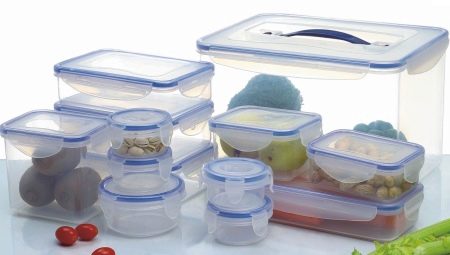Storage of products in containers is necessary to organize products on shelves, as well as to keep some products dry (buckwheat, oatmeal and other cereals). Plastic models are especially popular, which have a low cost and good practicality. Along with analogues, plastic has many drawbacks, so it is not practical to choose it as the main method of food storage.
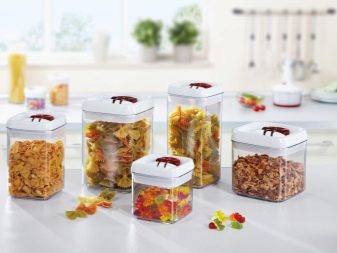
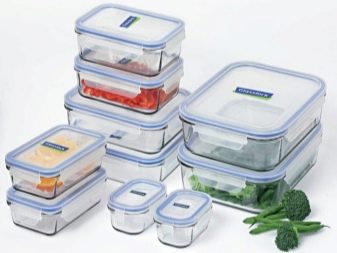
How to choose a container for products?
Glass containers
Glass is a beautiful, aesthetic material. Of course, there is no need to talk about practicality and durability: even the thickest glass is at risk of breaking if carelessly handled. Therefore, when using glass containers, you need to remember that these containers are fragile.
Besides, the disadvantages of glass containers include the severity of the structure - even the lightest options weigh 100-150 grams. And the last minus may be the price of glass containers - it is relatively higher than plastic options.
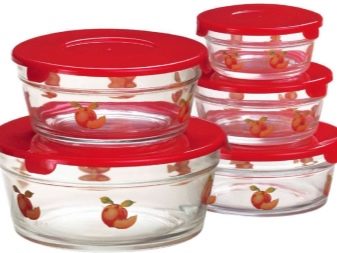
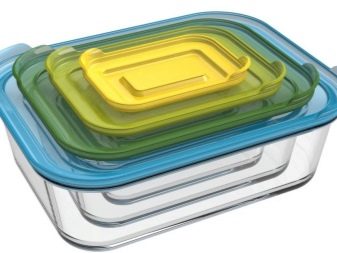
The advantage of glass is that it can be heated without problems in a microwave oven, in addition, any glass is a safe material, so nothing will be absorbed into the food that could harm the human body.
In addition to bulk cereals, glass containers will go well with the herbs stored in it (parsley, dill).
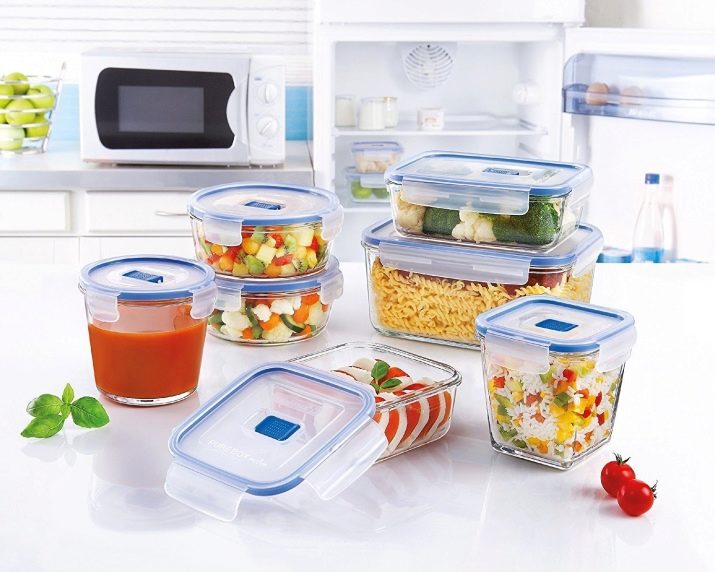
Consider the option.
Storage can Bodum Presso 1 liter represents a container from transparent glass.It has a comfortable silicone in contact with hands, a convenient shape, that is, everything the housewife needs to store food in airtight containers from Bodum. The product is intended for loose cereals: buckwheat, hercules, oatmeal. The jar has nothing superfluous, and the silicone inserts are pleasant in design. Borosilicate glass makes the model lightweight, but at the same time shockproof.
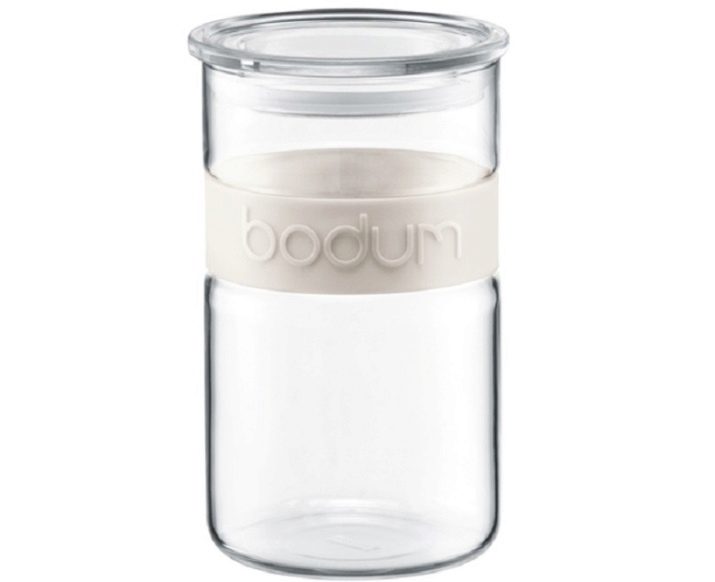
Ceramic containers
Ceramic models have not gained popularity among housewives, as they have a number of disadvantages. The main disadvantages of ceramics are its opacity, fragility and high weight. Manufacturers try to decorate ceramic containers with different color schemes, and also label them for greater ease of use (for cereals, bread, and so on).
Housewives choose ceramics, who value not only convenience, but also the appearance of such accessories. Ceramics are easy to clean; they do not absorb unpleasant odors from food. In addition, ceramics can boast of the most original forms: containers in the form of cats, poodles and various animals, colorfully made of clay burnt at high temperature.
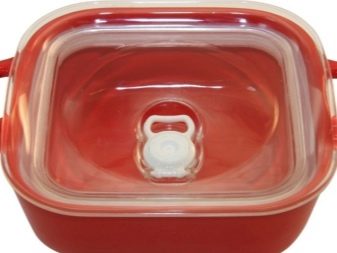
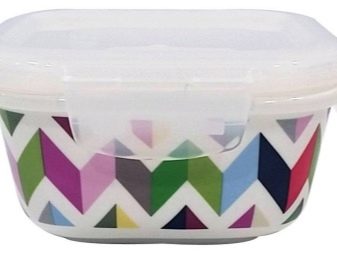
Option: "Clancy Cat" from Pavone at 2.6 liters.
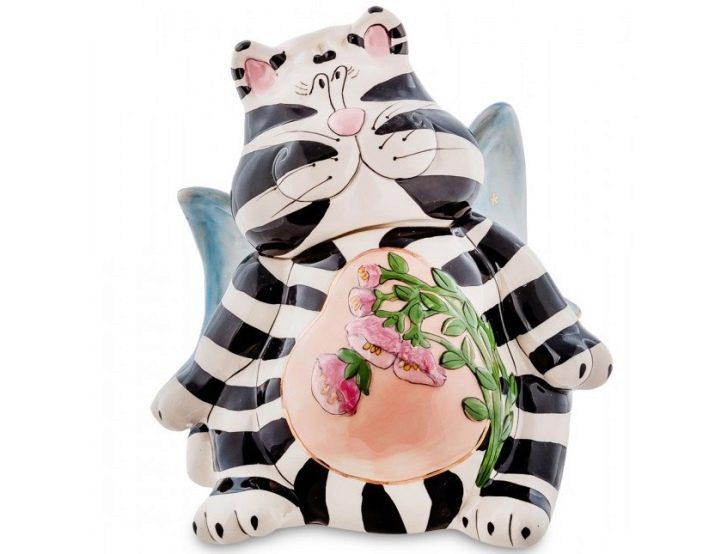
The entire line of ceramic containers from the Pavone brand is decorated in the style of animals.
The Cat Clancy model has a large capacity, which will not only put a fun accessory on a table or shelf, but also store a large amount of bulk food or spices in it. The container will especially appeal to those housewives who like to decorate life with decorative accessories with good reason.
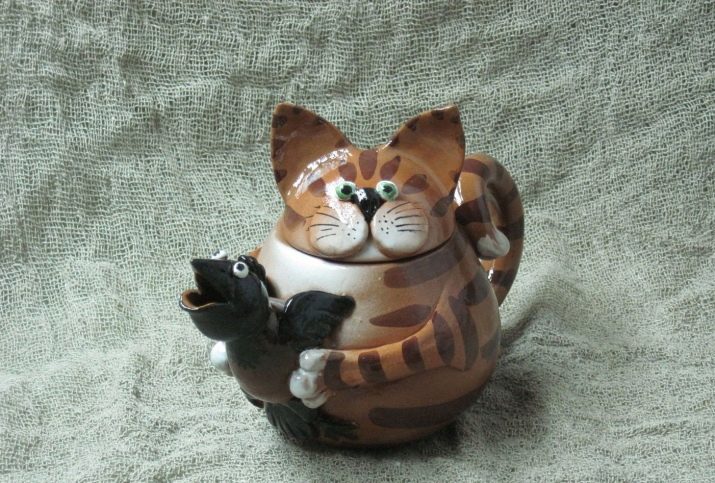
Plastic containers
A plastic container is the most budgetary and popular option for storing a wide variety of products: cereals, eggs, bread, greens. Plastic allows you to create a variety of container options: oblong, short, narrow, wide, low or high containers.
Another advantage is the tightness of the plastic: the lid tightly closes the container, creating an internal atmosphere of tightness. It is plastic containers that are best designed for storing eggs - convenient recesses help to place a dozen eggs without the risk of accidental damage.
In the store you can see both individual models and sets of plastic containers, so the choice is left to the buyer. A significant disadvantage of this method of storage of products is the composition of the plastic. Some models may have a corresponding odor that can be transmitted to products stored inside.
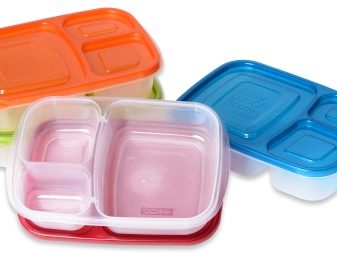
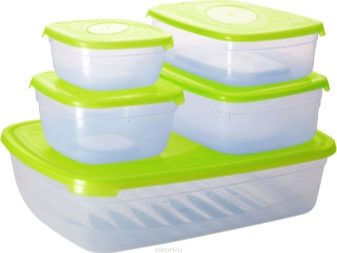
As well as plastic containers are most susceptible to destruction from the external environment: they can crack or deform from prolonged use, which cannot be said about glass containers.
It should not be forgotten that it is plastic in conjunction with foam that allows you to create isothermal containers with many trays for storing a large number of products while maintaining heat. Some of them are also called refrigerated containers, since they work in the reverse mode - they leave the cold cold in a warm climate.
Consider this option: a set from the Winner brandcontaining 3 containers of 1.6 liters each.
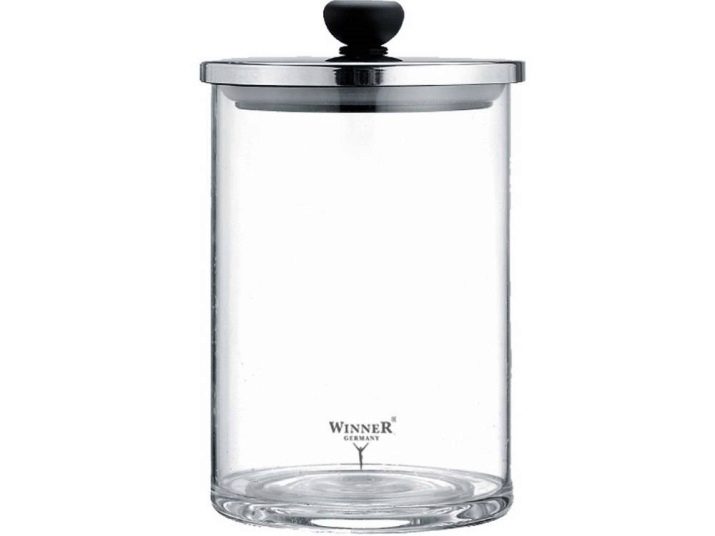
By purchasing plastic containers, you can safely take sets - they will definitely come in handy on the farm. In this case, each of the three containers is equipped with a window for determining what is stored inside, as well as a tight lid for protection from the external environment. The rectangular shape and minimalistic design of the models suggests that they fit into any environment, whether it is a kitchen table or a shelf in a kitchen cabinet.
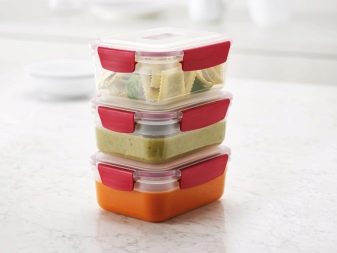
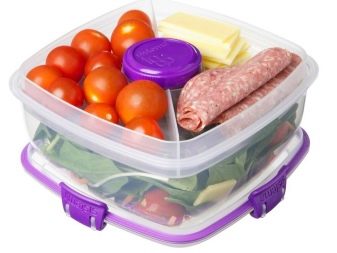
Metal containers
Iron accessories should be sorted right away, and buy only those that are provided with stainless properties. Otherwise, after a month of use, the walls will be covered with corrosion, and food storage is highly not recommended in such conditions. Metal is stronger than plastic and lighter than ceramics and glass, but often has a metallic smell in the first few weeks of use. Enameled metal is also safe only until the enamel is damaged, but if this happens, using the accessory is dangerous to health.
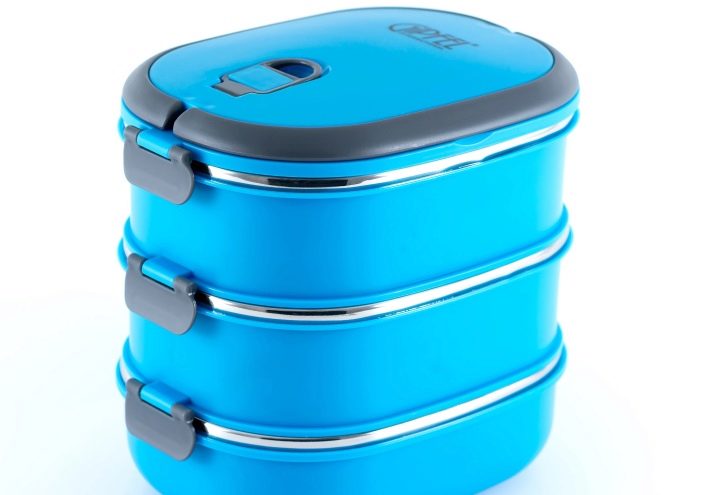
Metal is not intended for a microwave oven, but it is useful for cooking in the oven: it can withstand high temperatures and is not subject to deformation, so the hostess can bake in such containers.
Metal packaging option: Brabantia company, complete with 3 metal containers of 1.4 liters each. A set of three steel containers offers to store sugar, coffee and tea separately. Each container has a corresponding inscription, however, nobody obliges anyone to store these products inside. In any of them you can put grass or cereals in storage.
The ideal volume of 1.4 liters (not scanty, but not very large) allows you to arrange all 3 containers, even in a small kitchen. The lid fits snugly to the base, so you can count on the long-term preservation of products fresh.
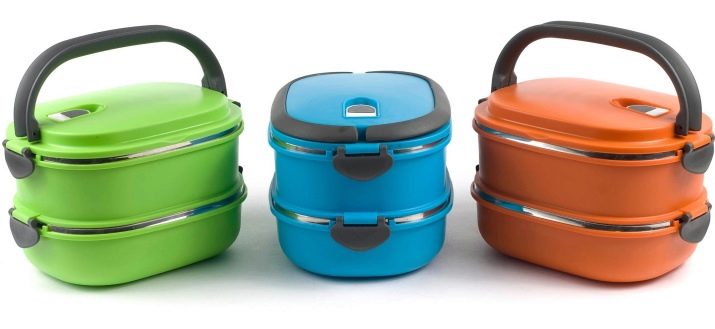
Wooden containers
Wood products attract with their beauty. Carvings can decorate a food container with a wide variety of patterns. However, insecurity is hidden behind beauty - without a weekly treatment with special solutions, the tree begins to absorb everything it comes into contact with: the smell of stored cereals and moisture that the environment releases.
Besides, lids on wooden containers do not seal the space inside, so food safety will have to be taken separately. For these reasons, wood products should not be used as containers for storing bulk cereals or prepared food.
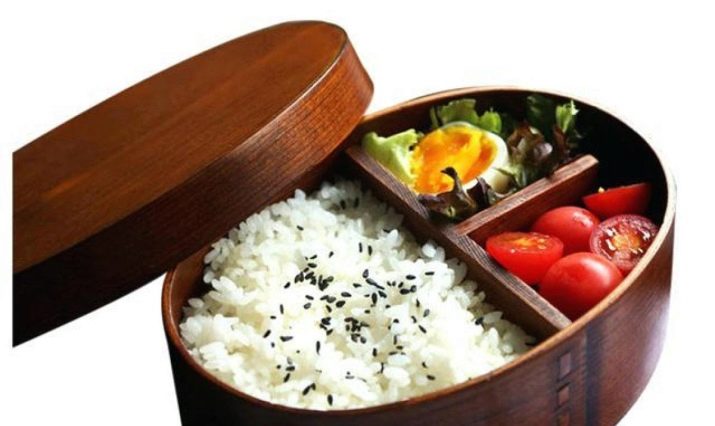
Finding a wooden container for sale is difficult. This is due to the fact that an extremely small number of people use this method of food storage, because it does not have practicality.
In case of extreme desire to use wooden containers, you can place an order at the nearest company, which makes custom-made wooden accessories. They will take into account the individual wishes of the buyer and make a container, but this will most likely be quite expensive, since manual work requires a good payment.
How to choose a good container for storing products, see the video below.
